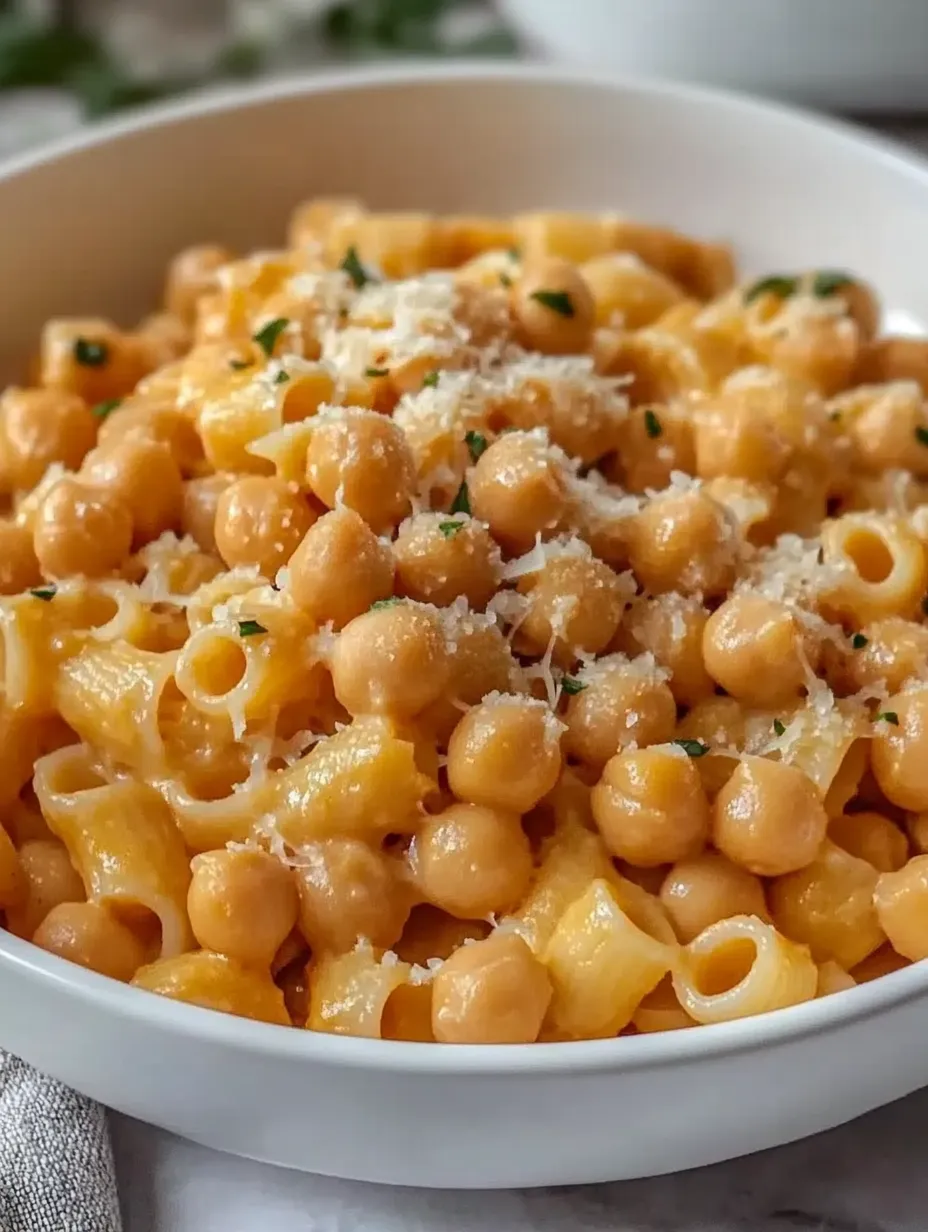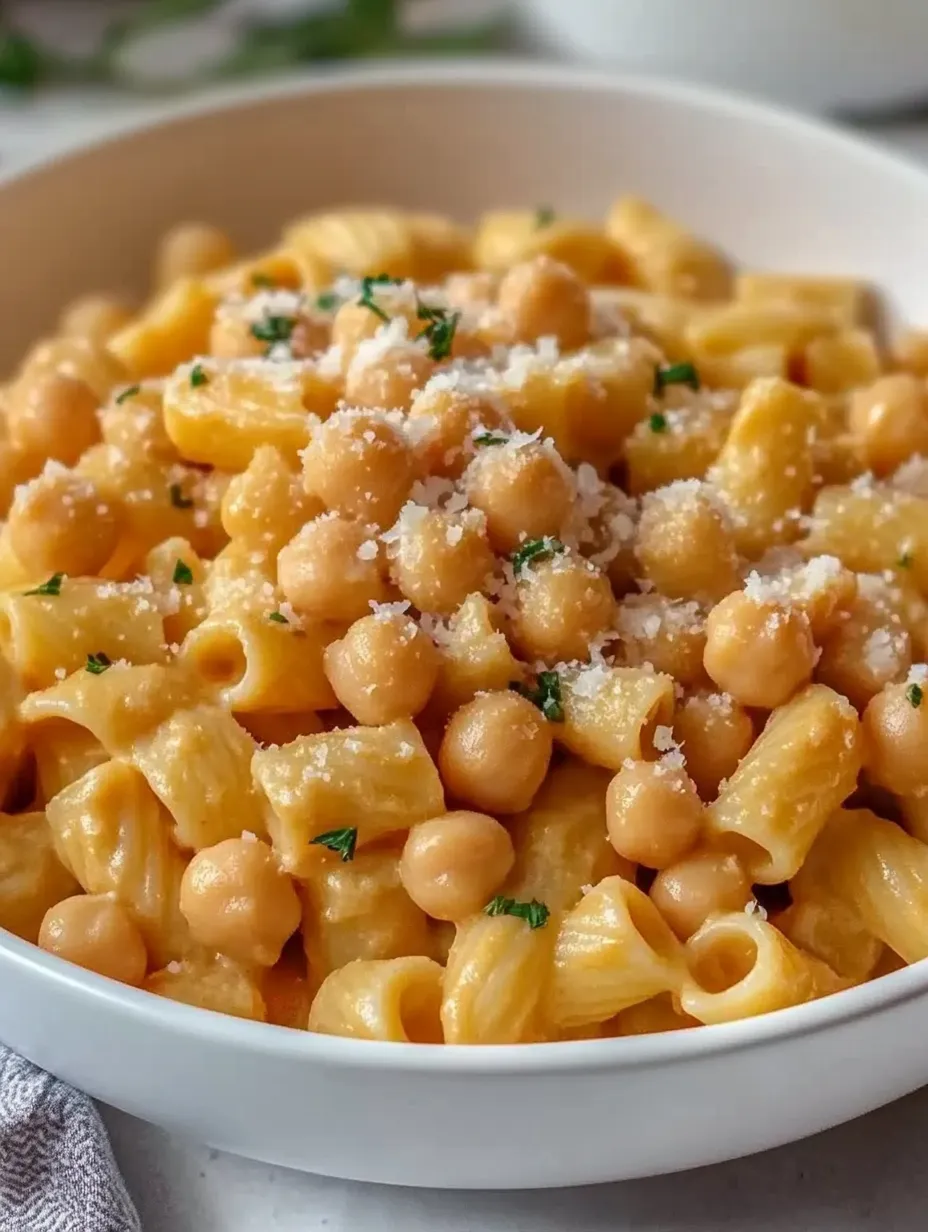 Pin
Pin
This chickpea pasta dish turns basic cupboard items into an incredibly cozy Italian staple. Filling, tasty, and downright satisfying, this down-to-earth pasta and chickpea mix has kept Italian homes well-fed for countless years while needing just a handful of simple items.
I found this dish during a super hectic time when my fridge was nearly empty. The moment I tasted it, I felt like I was sitting in a tiny Italian eatery, and now it's the first thing friends ask for when they drop by on cold nights.
Ingredients
- Chickpeas: giving you plant protein and smooth texture when partly squashed
- Ditalini pasta: those cute little tubes that grab sauce perfectly
- Olive oil: go for extra virgin to get the best taste
- White onion or shallots: making a lovely sweet foundation
- Garlic cloves: adding that must-have rich kick
- Fresh rosemary: offering woody scents that work wonders with chickpeas
- Tomato paste: packed flavor that makes everything richer
- Chili flakes: adding subtle heat not tongue-burning fire
- White wine: loosening pan bits and cutting through richness
- Vegetable stock: making the tasty sauce base
- Pecorino cheese: bringing salty goodness and helping make everything silky
Cooking Guide
- Start Your Base:
- Warm olive oil in a pan over medium heat until it glistens. Toss in chopped onion and let it cook 5–6 minutes until see-through and slightly golden around the edges. This slow cooking brings out sweetness that forms the heart of your meal.
- Add Aromatics:
- Drop in sliced garlic and cook another 1–2 minutes until smelly but not brown. Then quickly add chopped rosemary and chili flakes, stirring all the time for about 60 seconds. This quick heating releases their oils and spreads their flavors throughout your dish.
- Boost With Tomato:
- Mix in tomato paste and keep stirring for roughly 2 minutes until it gets a bit darker and smells sweet. This short cooking changes the raw tomato taste into something much deeper.
- Make Your Sauce:
- Splash in white wine and scrape any stuck bits from the pan bottom. Let it bubble down for 2–3 minutes until it doesn't smell boozy anymore. Add chickpeas and stock, bringing everything to a gentle bubble. Use your spoon to mash about a quarter of the chickpeas against the pan side. This trick makes everything creamy without adding flour or cream.
- Mix In Pasta:
- Throw uncooked pasta right into the bubbling mix, stirring often so nothing sticks. Cook until pasta is soft but still a tiny bit firm when you bite it. The starch from the pasta helps thicken the sauce and makes it stick to each bite.
- Add The Cheese:
- Take off the heat and right away mix in Pecorino cheese until it's fully melted and mixed in. The leftover heat turns your sauce into a smooth, unified mix that covers every mouthful.
 Pin
Pin
The modest chickpea really makes this dish stand out. While wandering through central Italy, I came across a small family place where the owner told me pasta e ceci was typically eaten on Fridays when they skipped meat. She used chickpeas her family grew and dried themselves, creating an amazing flavor I try to capture whenever I cook this meal.
Historical Context
Pasta e ceci has strong ties to Italian poor folks' cooking that turned cheap stuff into filling meals. Going back hundreds of years, this dish kept farm families fed through winter when fresh veggies weren't around. Mixing beans and pasta made complete protein, which was super important during tough times. You'll find different versions across Italy, from soupy Roman styles to thicker Tuscan takes, but they all share the beautiful way they turn basic pantry stuff into something way better than you'd expect.
Texture Perfection
The best pasta e ceci has a smooth, slightly thick sauce that sticks to each bit of pasta without getting gluey. The trick is to smash some chickpeas while keeping others whole for different textures in each bite. Cook the pasta a bit less than what the box says since it'll soak up more liquid as it sits. If your dish gets too thick after sitting awhile, just add a splash of hot water or stock before eating to get that velvety smoothness Italian grandmas have gotten just right for generations.
Flavor Variations
This dish works great as a starting point for making it your own. For deeper taste, throw in some anchovy fillets when cooking the garlic they completely dissolve but add amazing rich flavor. Switch white wine for red to make it heartier, especially in cold weather. Toss in kale or spinach during the last few minutes for extra nutrients and color. Try different herbs like thyme or sage instead of rosemary. For a fancier finish, drizzle your best olive oil and crack fresh black pepper just before serving to add aromatic layers that make this simple dish really special.
 Pin
Pin
FAQs About the Recipe
- → Can I use a different type of pasta?
Sure thing, you can swap ditalini for any small pasta like elbow macaroni or orzo if that's what you've got handy.
- → What can I use instead of white wine?
White wine vinegar works great as a stand-in, or you can even add a bit of lemon juice to get that tangy flavor.
- → How do I store leftovers?
Pop any extras in a sealed container and keep them in your fridge for up to 5 days. When warming it up, add a splash of veggie stock to keep it nice and creamy.
- → Can I add more vegetables to this dish?
You bet! Throw in some carrots, celery, or fresh cherry tomatoes to make it even tastier with more texture.
- → Is this dish suitable for vegans?
Just skip the Pecorino cheese or use a vegan cheese instead and you'll have a totally vegan-friendly meal.
